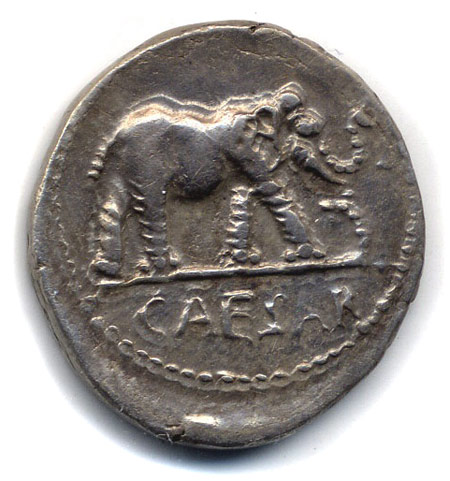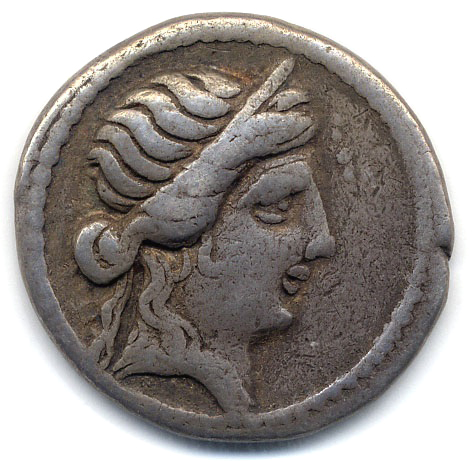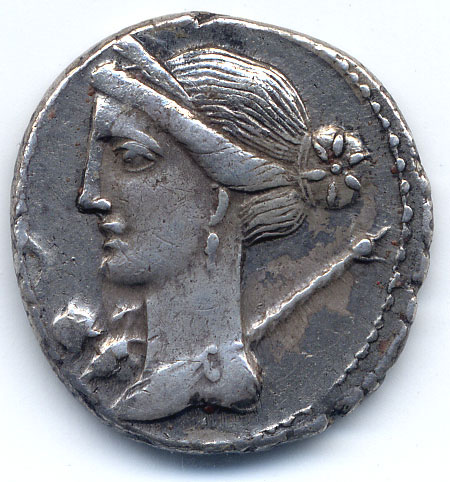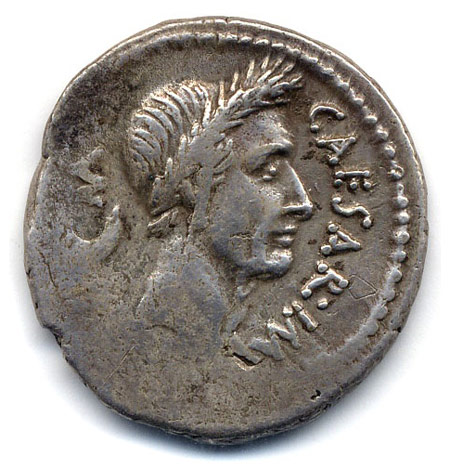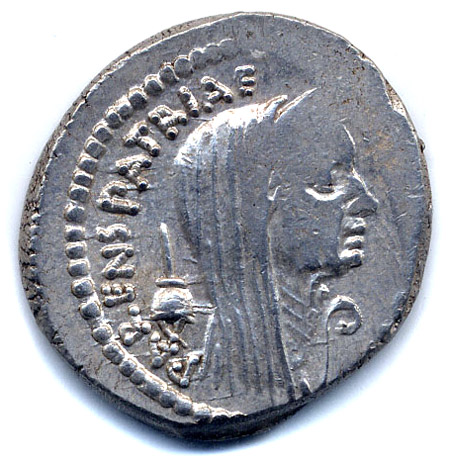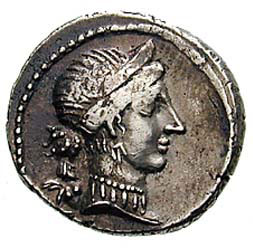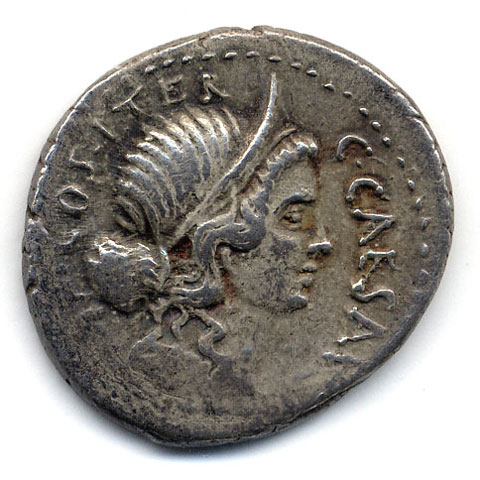Caesar's Career on Coins
The titles on Caesar's coins and the offices he chose to represent on his coin types allow us to follow his progress to power. Below is a list of all the titles Caesar used on his coinage.

- CAESAR – RRC 443 (49-48 BC), 452/1-5 (48-47 BC), 458 (47-46 BC), 468/1-2 (46-45 BC)
- CAESAR DICT ITER (Dictator for the second time) – RRC 456 (47 BC)
- CAESAR IMP COS ITER (Imperator Consul for the second time) – RRC 457 (47 BC)
- CAESAR COS TER (Consul for the third time) – RRC 466 (46 BC)
- CAESAR COS TER DICT ITER AVGVR PONT MAX (Consul for the third time Dictator for the second time Augur Pontifex Maximus) – RRC 467 (46 BC)
- C CAES DICT TER (Dictator for the third time) – RRC 475/1-2 (45 BC)
- CAESAR DICT QVART (Dictator for the fourth time) – RRC 480/2 (44 BC)
- CAESAR DICT QVART COS QVINC (Dictator for the fourth time, Consul for the fifth time) – RRC 481 (44 BC)
- CAESAR IMP (Imperator) – RRC 480/3-5 (44 BC), 482 (44 BC)
- CAESAR DICT PERPETVO (Dictator for life) – RRC 480/6-14 (44 BC)
- CAESAR DICT IN PERPETVO (Dictator for life) – RRC 480/15-16 (44 BC)
- CAESAR IMPER (Imperator) – RRC 480/17-18 (44 BC)
- CAESAR PARENS PATRIAE (Father of his country) – RRC 480/19-20 (44 BC)
- CLEMENTIAE CAESARIS (Caesar's Clemency) – RRC 480/21 (44 BC)
Four of his issues from 49-45 BC are struck with only the name of Caesar (RRC 443, 452/1-5, 458 and 468/1, RRC 468/2). These are some of his earliest and his largest issues. It is not until 47 BC that Caesar includes any description of the offices he held on his coinage, naming his second dictatorship in the legend (RRC 456). By using his name alone, especially in the early period of the civil war when his legitimacy in office was highly questionable, he emphasises his own authority, rather than that of the state in the minting of his issues.
The representation of his political and military offices on coins is also useful for dating and chronology. It is only in the coinage of the quattuorviri of 44 BC that problems arise in the dating of the issues. This is primarily because a large number of issues were struck within a small period of time. The series of these IIIIviri begins with RRC 480/2; the obverse legend is DICT QVART. The fasti recorded that Caesar held the Dictatorship for the fourth time from 45 BC until at least 26 January 44 BC, allowing the coin to be dated to around the first month of 44 BC. Crawford places the CAESAR IMP coins next in the series (RRC 480/3-5, RRC 480/4 ), just after Caesar's refusal of the crown at Lupercalia. Kraay (1954:23-4) believed that the CAESAR IMP and DICT QVART coins were being struck simultaneously, a parallel issue. One was a civic issue advertising the political office of Dictator, and the other a military issue for the upcoming war with Parthia using the military designation of Imperator. Alföldi (1958:32) has an alternative explanation for the occurrence of IMP on Caesar's coins. He argued that on two coins, RRC 457 and 482, IMP was used because Caesar did not hold the Dictatorship at the time of striking . Alföldi believed that the position of Dictator (DICT) would supersede his title of Imperator (IMP). RRC 482 was minted in 44 BC when Caesar definitely held the dictatorship; at the end of 45 BC he was granted the office for ten years (Dio 43.45.1, Suet. Div Iul 76.1). The evidence, does not support either the theories of Kraay or Alföldi. The use of IMP as a title may rather represent a decision to portray all aspects of Caesar's power. In a single year Caesar was represented numismatically as Dictator, Imperator, Pontifex Maximus and Consul: each office was considered important enough to be represented.
After being granted the dictatorship for life, around mid February to the beginning of March 44 BC, Caesar's titles changed. They read either DICT PERPETVO or DICT IN PERPETVO to reflect his new status. The aftermath of Caesar's assassination also led to a change in titulature. The PARENS PATRIAE (RRC 480/19-20) and the CLEMENTIAE CAESARIS (RRC 480/21) issues are likely posthumous, and are normally dated after the abolishment of the dictatorship by Antony.
While naming the office of the issuing magistrate was not a new phenomenon on Roman coinage, Caesar's changing titulature had very little precedent. His coinage provided a model for the Triumvirs to follow in subsequent years and became the basis for many obverses of imperial issues, which documented not only the portrait of the emperor but also his titulature.

